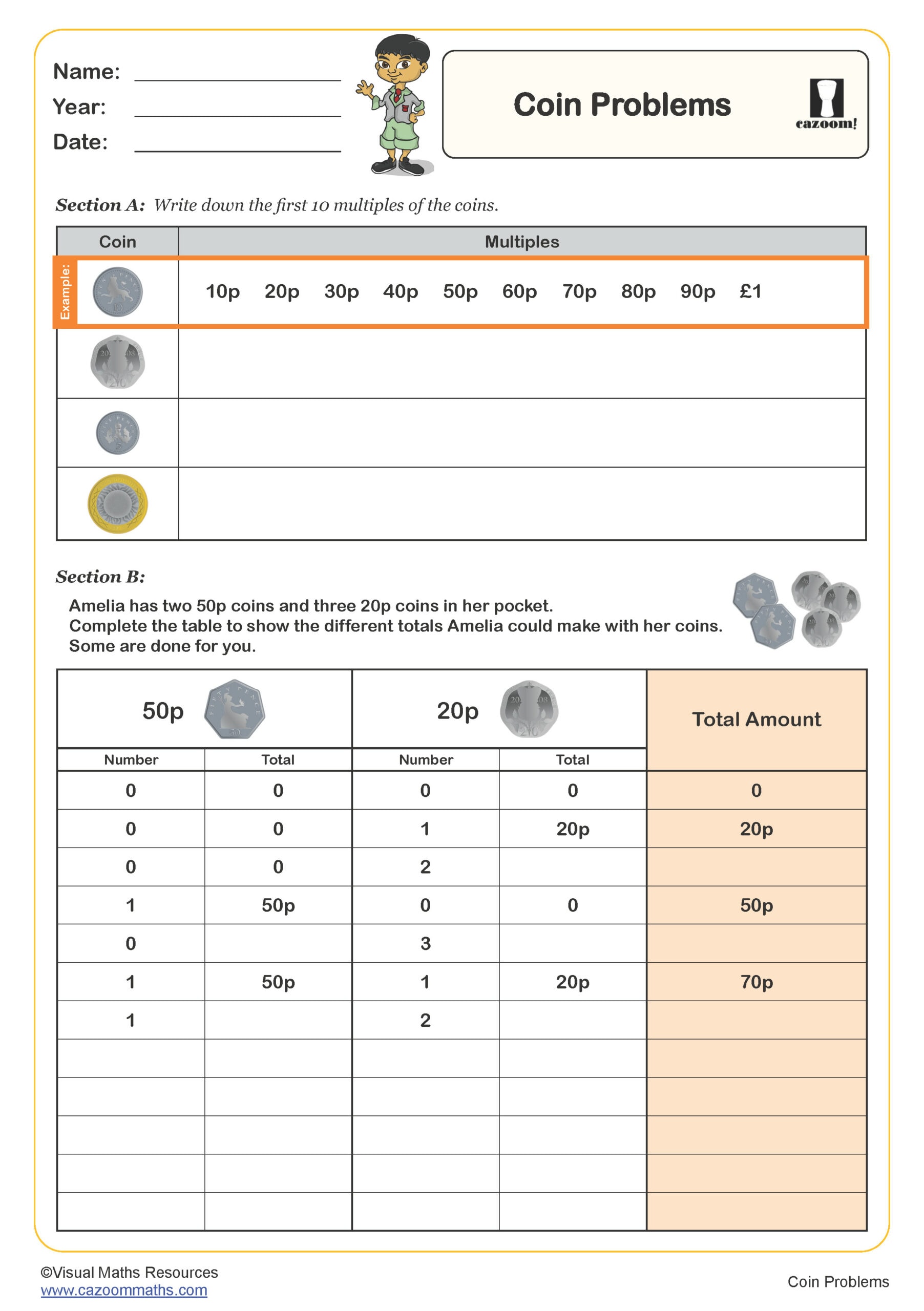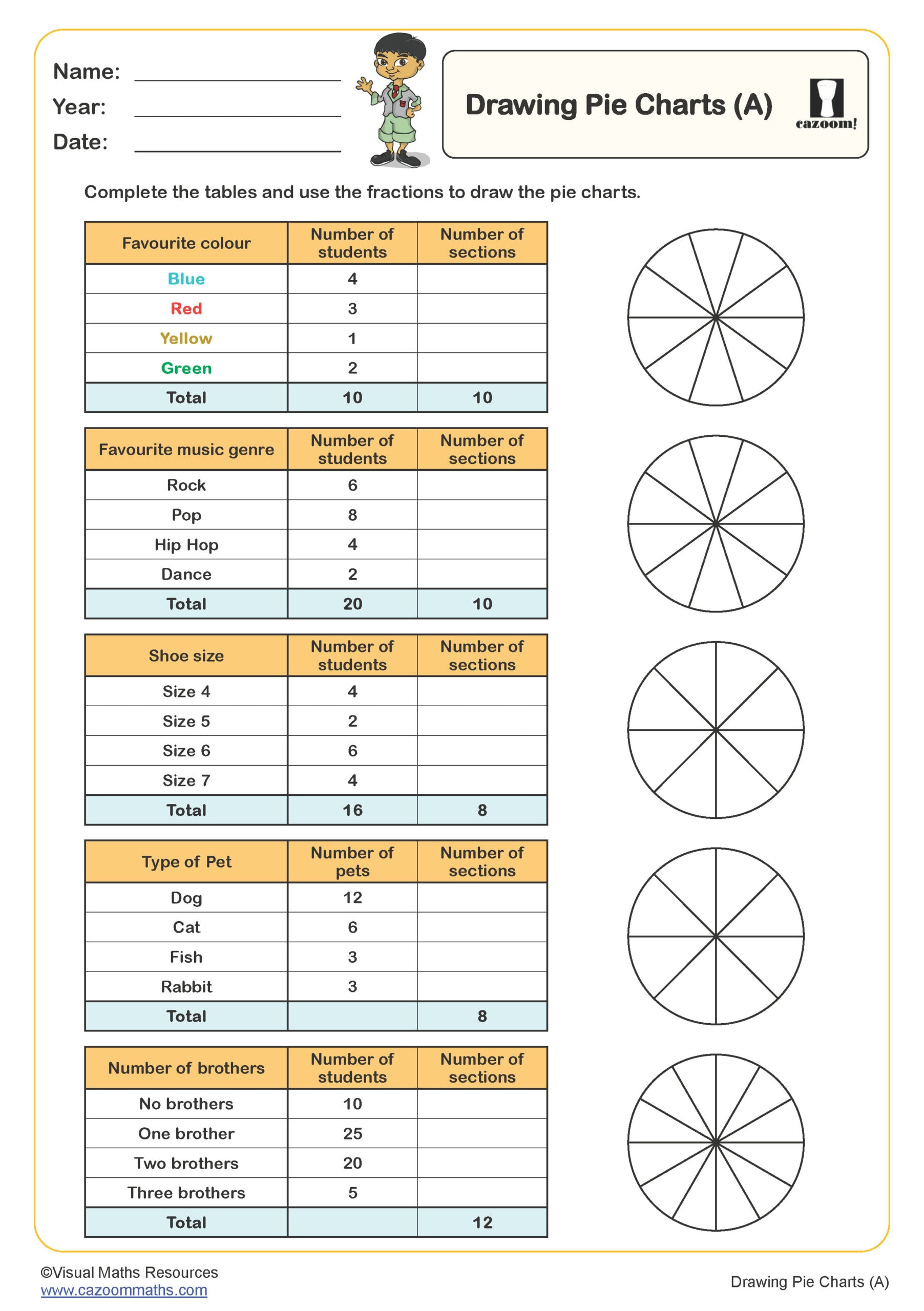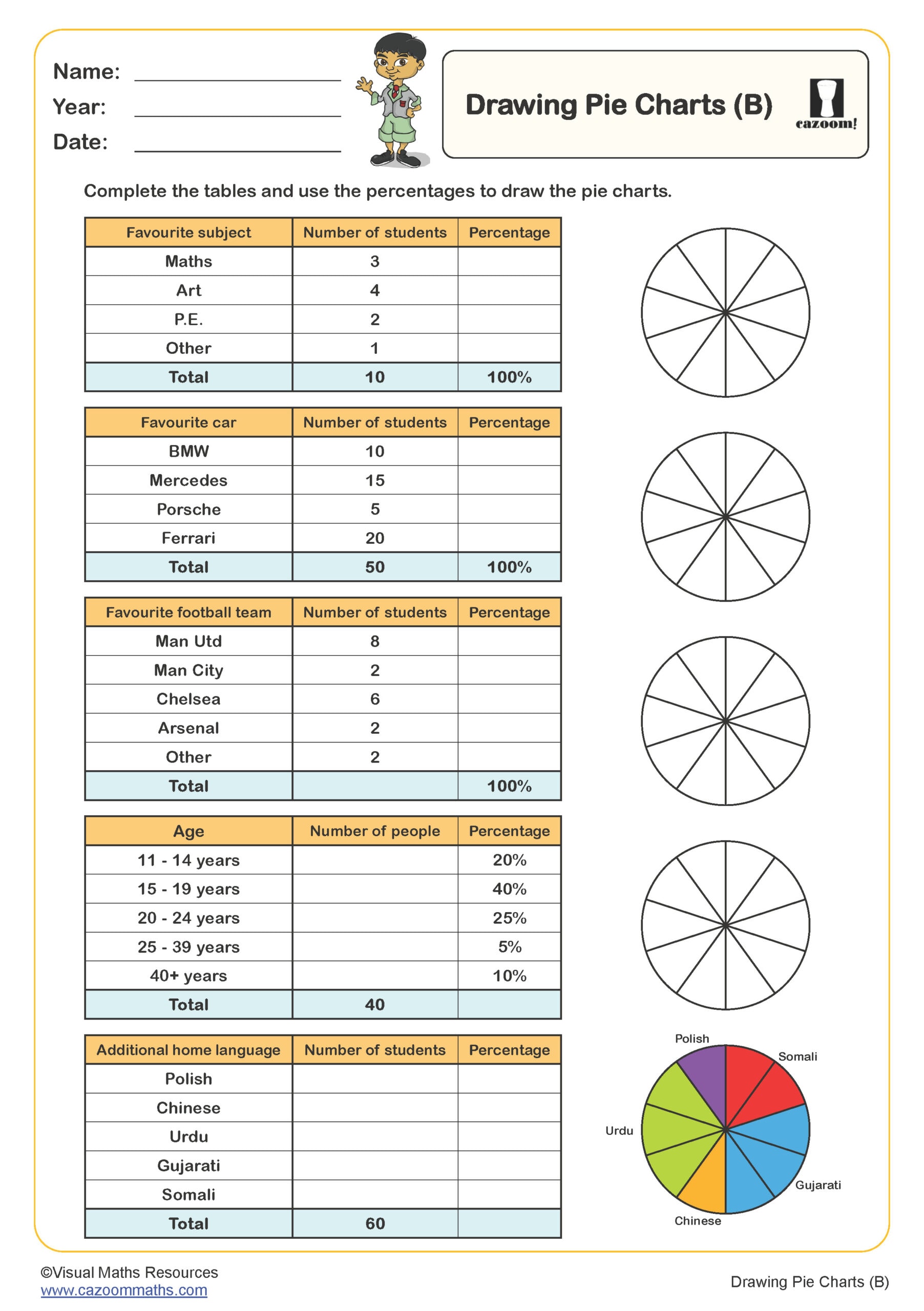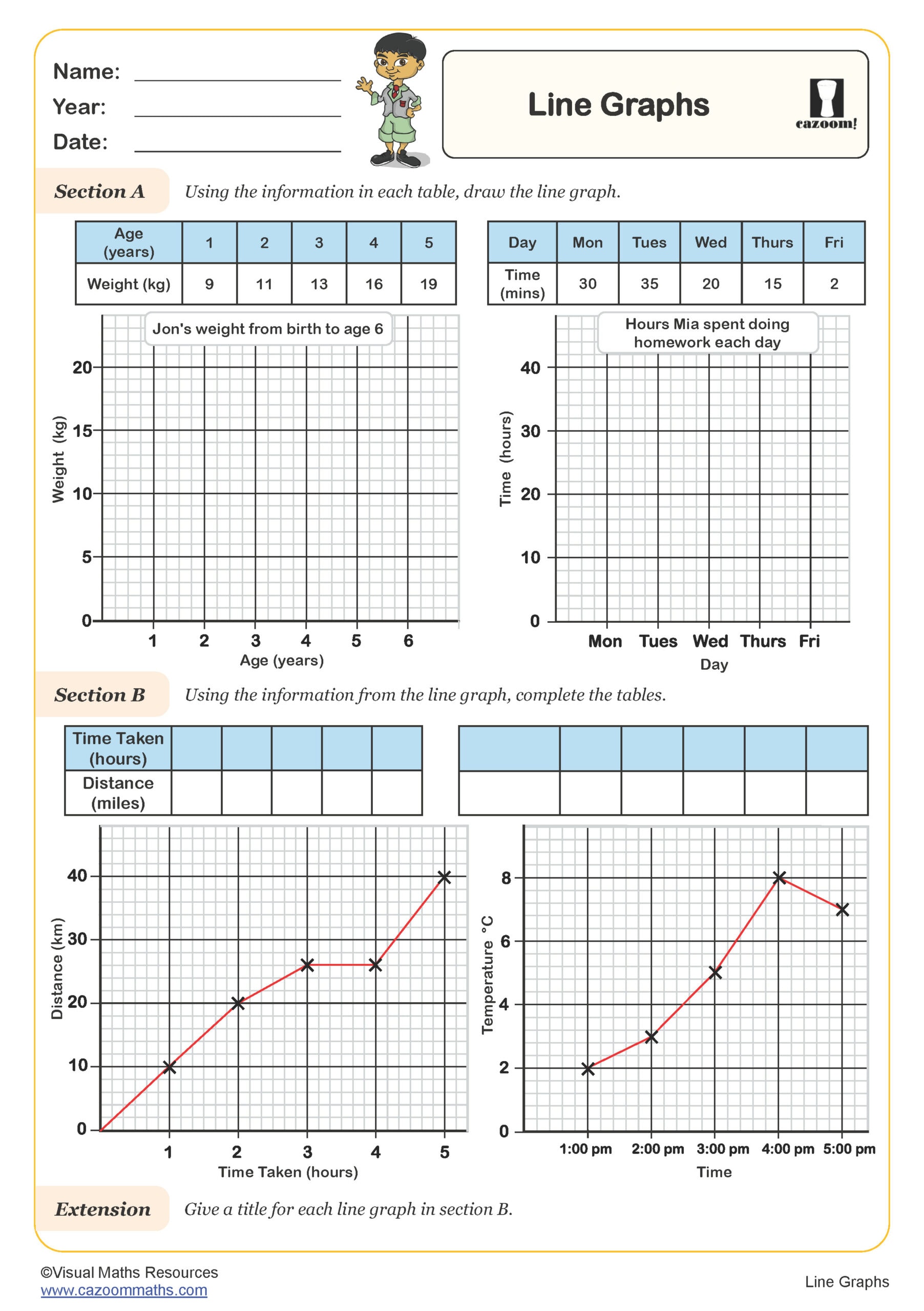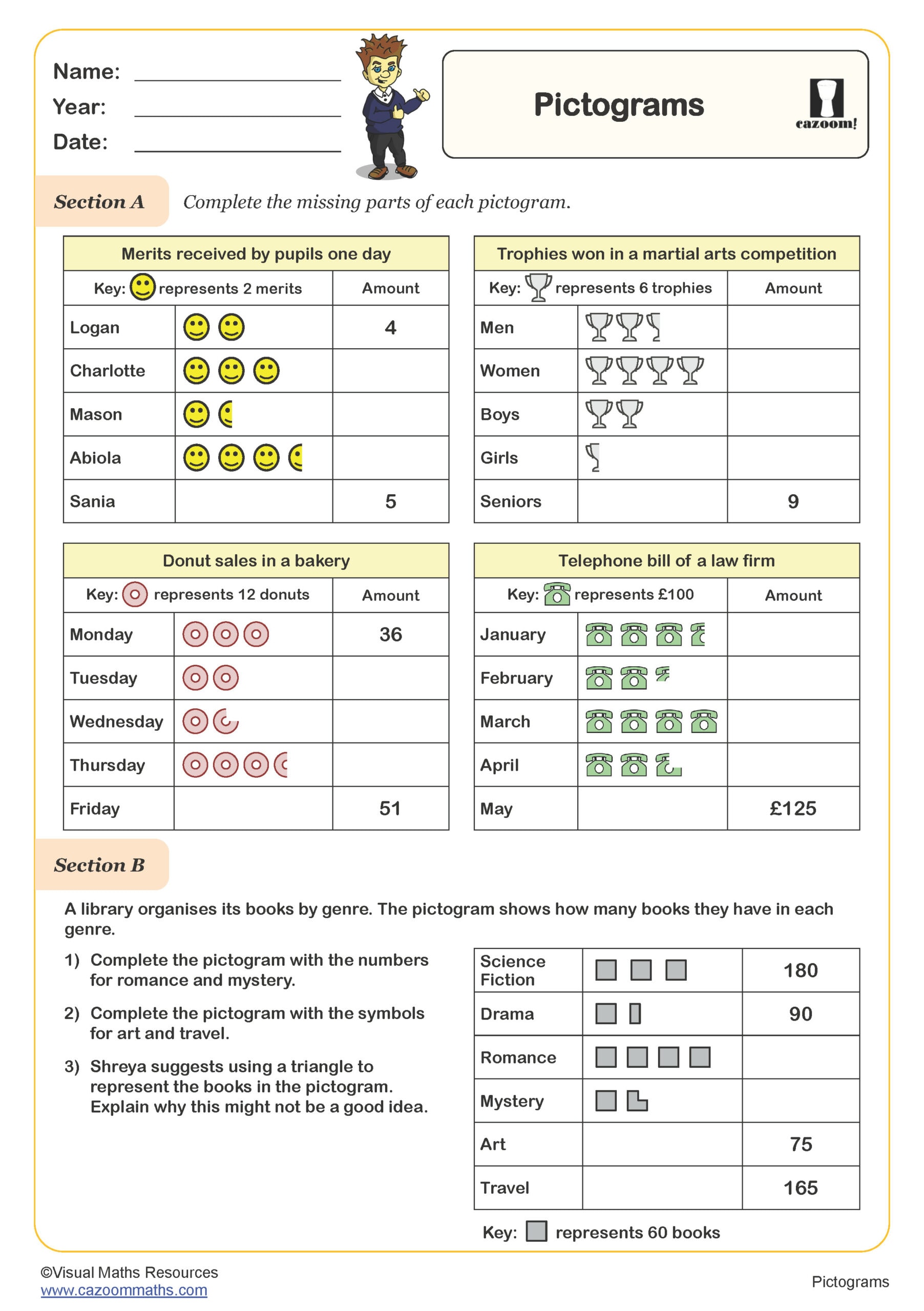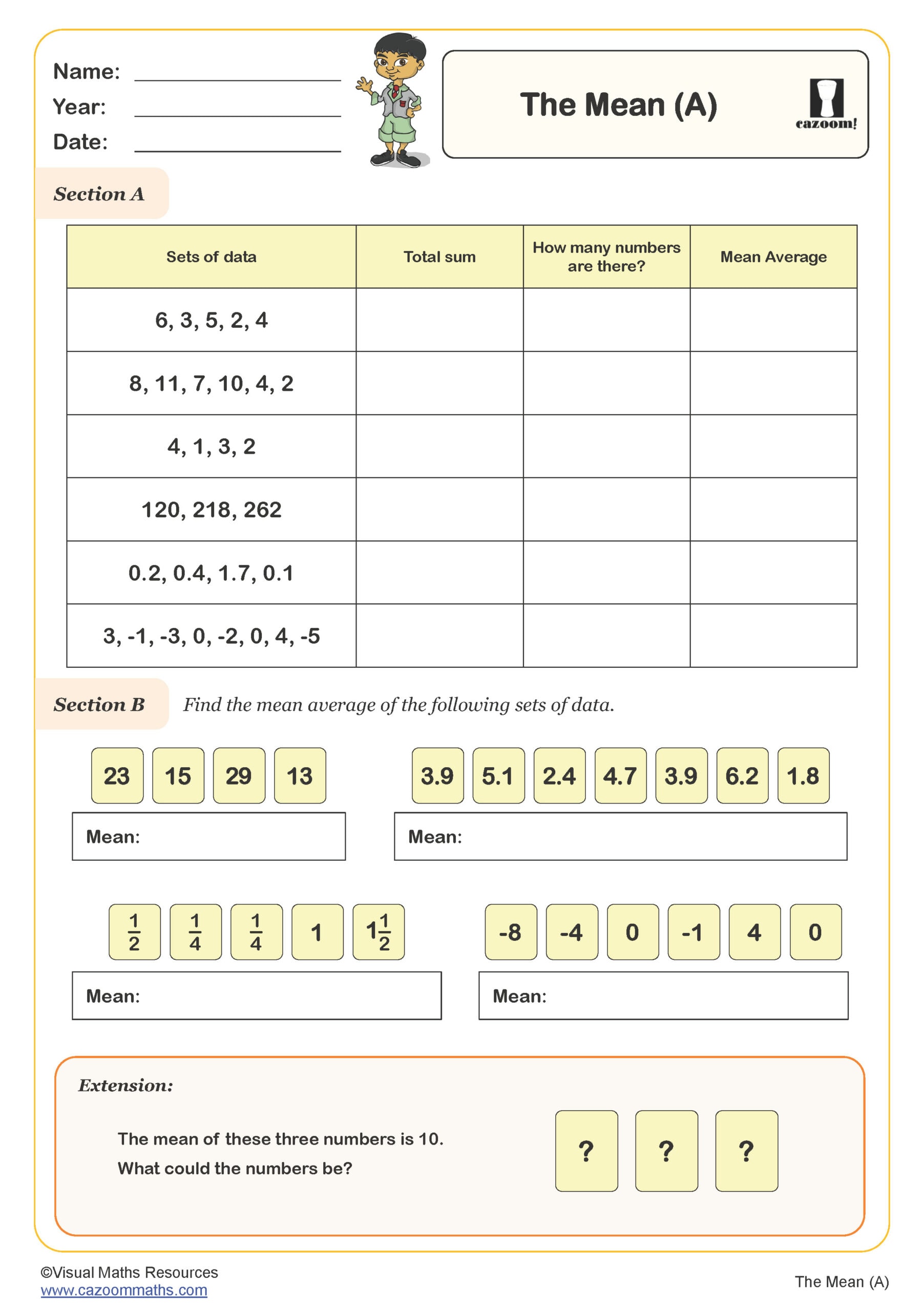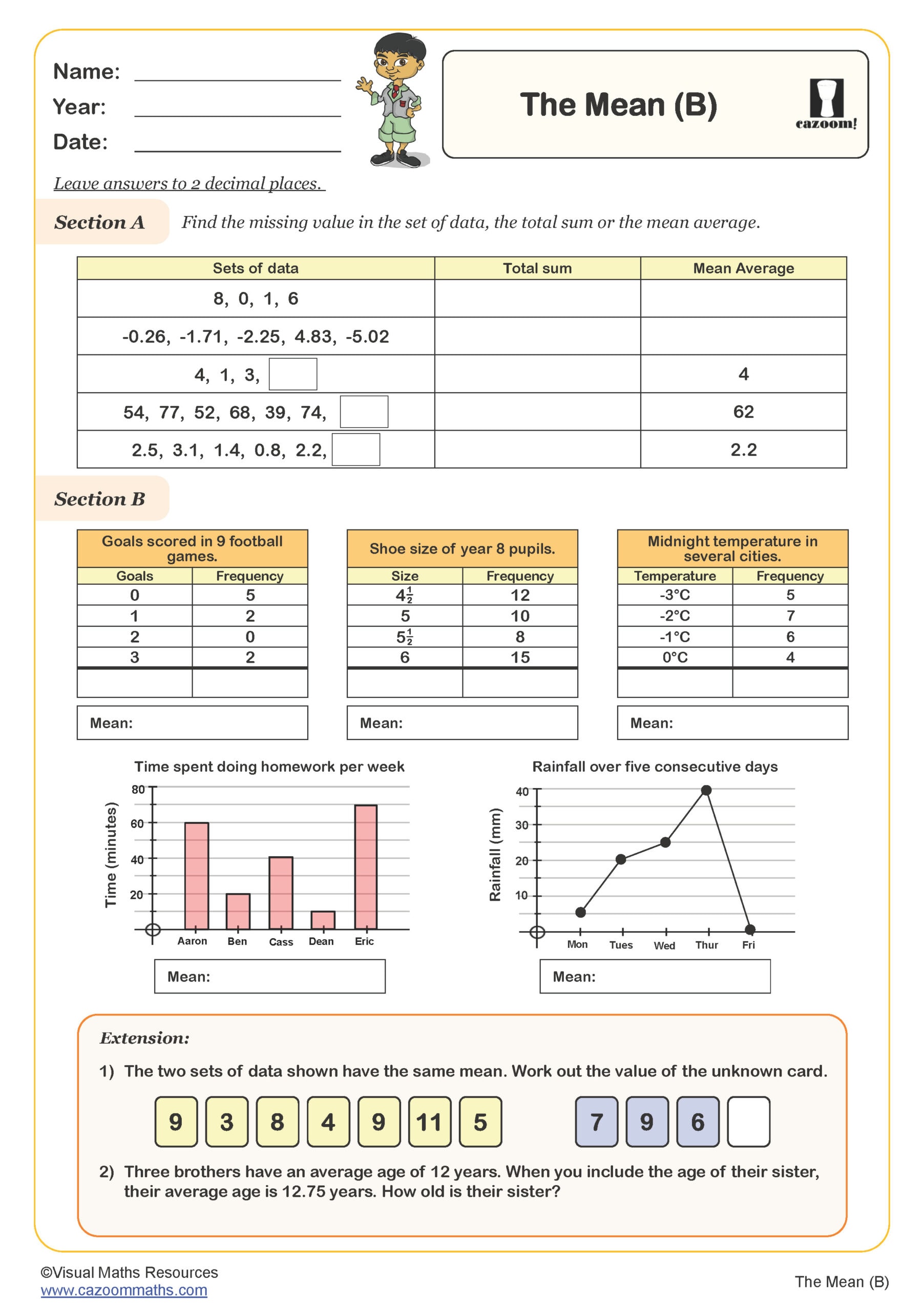Year 6 Algebra and Statistics Worksheets
Year 6 Algebra and Statistics PDF Worksheets | Printable Assessment Resources
We have put together these printable PDFs so you can grab what you need without any fuss. They start with the basics and gradually work up to the more challenging stuff - no throwing students in at the deep end here. Each worksheet comes with detailed answer sheets that show the working (because we know how frustrating it is when you can see the answer but not how to get there). The step-by-step solutions are brilliant for helping students spot where they've gone wrong, and they make your marking so much quicker too.
What Algebra and Statistics Topics Are Covered in Year 6 Maths Worksheets?
We've built these worksheets around what Year 6 students actually need to know! They'll start with algebraic notation and work their way up to solving equations, while also getting hands-on with data handling.
We've crammed loads into these worksheets:
• Basic Algebraic Concepts - You know, all that essential groundwork like substitution and order of operations. Might sound boring, but honestly, get this bit right and everything else clicks into place
• Equation Solving - We start them off gently with simple one-step stuff, then gradually introduce the trickier problems with multiple unknowns. No point scaring them off from the get-go!
• Function Machines - These are absolute gold for getting kids thinking logically. There's something about the input-output format that just works - they treat it like solving puzzles
• Patterns and Sequences - Finding rules in number patterns and working with nth terms. Sounds dry on paper, but you'd be amazed how into it they get once they crack their first few
• Statistics Topics - All the chart-making, graph-reading, and average-calculating they'll need. We use proper data too, not just made-up numbers
• Problem Solving Applications - This is where it all comes together - taking everything they've learned and applying it to situations they actually recognise from their own lives
How Do Year 6 Algebra Worksheets Prepare Students for Secondary School?
The feedback we get from teachers is pretty consistent: students who've had proper algebra practice in Year 6 aren't fazed by secondary school maths. That logical thinking they develop spills over into other subjects too - science experiments make more sense, geography data becomes less mysterious. What's really encouraging is hearing from secondary teachers that these students arrive ready for KS3 challenges, with the mathematical confidence that'll serve them well through to GCSEs.
When Do Students Actually Use Year 6 Algebra and Statistics in Real Life?
This is the question every student asks! The truth is, they're using these skills more than they realise. Working out how long it'll take to save for that new game? That's algebra. Understanding whether their football team's really improving this season? Statistics in action. Even something as simple as doubling a recipe for a family gathering involves the same mathematical thinking we're developing here.
They'll use these skills for:
• Working out savings goals and how long they'll take to reach them
• Making sense of charts and graphs they see online and in the news
• Planning events and calculating what they'll need (and what it'll cost)
• Comparing prices to get the best deals (essential life skill!)
• Creating surveys for school projects and actually understanding what the results mean
• Tackling science experiments with confidence when data collection is involved
